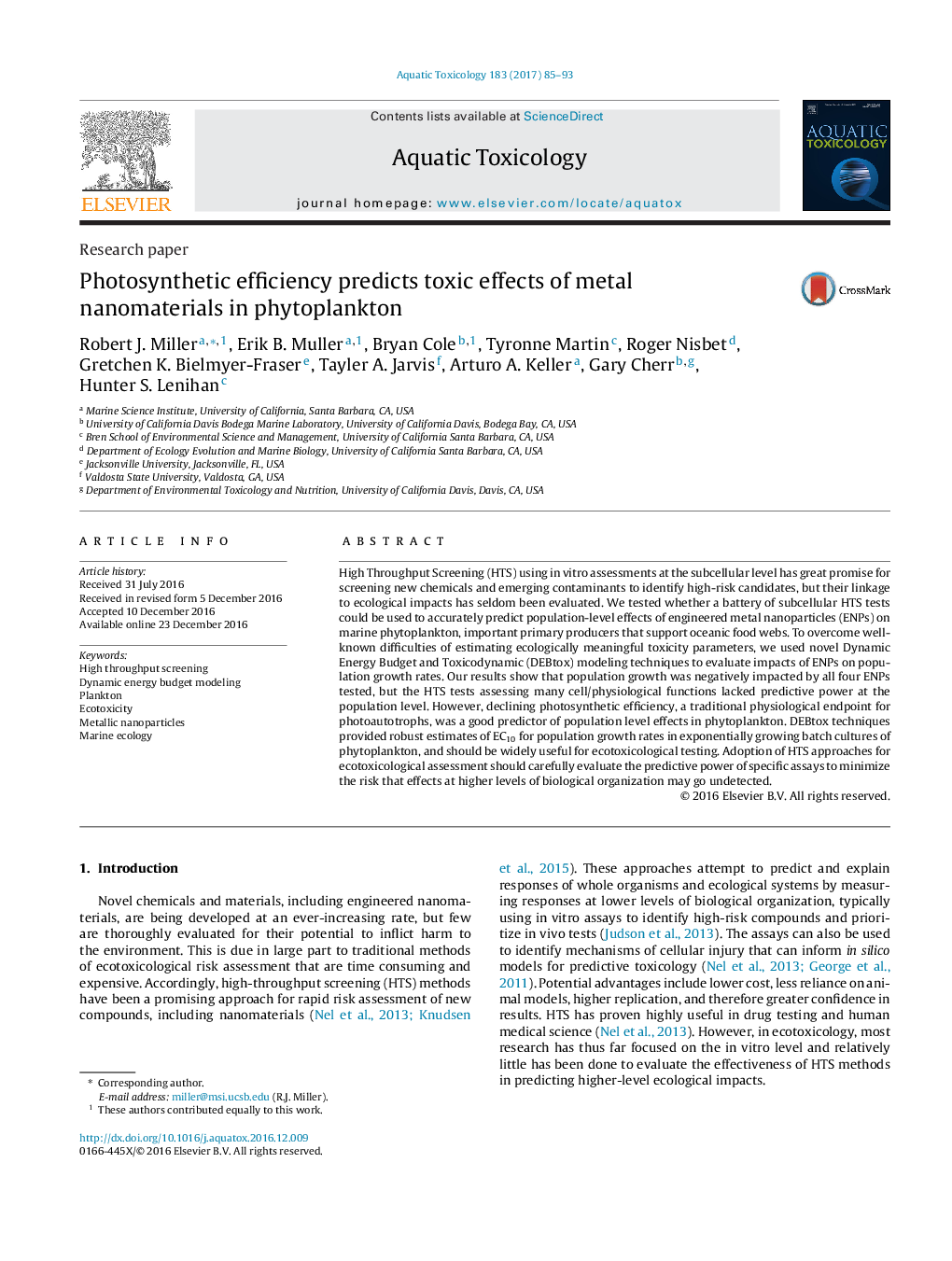| کد مقاله | کد نشریه | سال انتشار | مقاله انگلیسی | نسخه تمام متن |
|---|---|---|---|---|
| 5764204 | 1625922 | 2017 | 9 صفحه PDF | دانلود رایگان |
- Engineered metal nanoparticles were toxic to phytoplankton populations, but commonly used HTS assays of cell functions lacked predictive power.
- Photosynthetic efficiency was a good predictor of population level effects in phytoplankton.
- DEBtox techniques provided robust estimates of EC10 for phytoplankton population growth rates, and will be widely useful for ecotoxicology.
- Adoption of HTS ecotoxicological approaches should choose assays to minimize undetected effects at higher levels of biological organization.
High Throughput Screening (HTS) using in vitro assessments at the subcellular level has great promise for screening new chemicals and emerging contaminants to identify high-risk candidates, but their linkage to ecological impacts has seldom been evaluated. We tested whether a battery of subcellular HTS tests could be used to accurately predict population-level effects of engineered metal nanoparticles (ENPs) on marine phytoplankton, important primary producers that support oceanic food webs. To overcome well-known difficulties of estimating ecologically meaningful toxicity parameters, we used novel Dynamic Energy Budget and Toxicodynamic (DEBtox) modeling techniques to evaluate impacts of ENPs on population growth rates. Our results show that population growth was negatively impacted by all four ENPs tested, but the HTS tests assessing many cell/physiological functions lacked predictive power at the population level. However, declining photosynthetic efficiency, a traditional physiological endpoint for photoautotrophs, was a good predictor of population level effects in phytoplankton. DEBtox techniques provided robust estimates of EC10 for population growth rates in exponentially growing batch cultures of phytoplankton, and should be widely useful for ecotoxicological testing. Adoption of HTS approaches for ecotoxicological assessment should carefully evaluate the predictive power of specific assays to minimize the risk that effects at higher levels of biological organization may go undetected.
Journal: Aquatic Toxicology - Volume 183, February 2017, Pages 85-93
